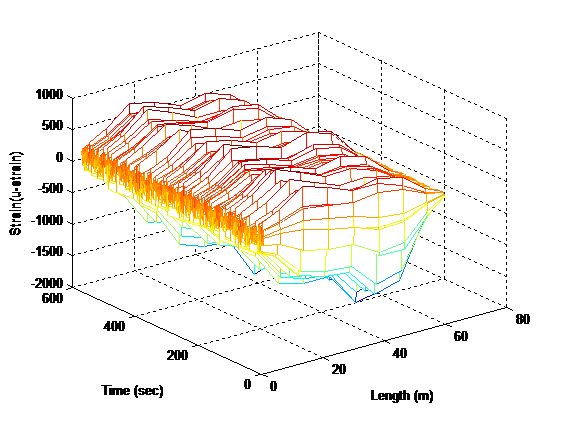
As wind turbines grow in size and power output, so do the complications in maintenance and repair work that are necessary to prevent failure. Structural failure of a wind turbine can quickly turn catastrophic as the tall, rotating tower collapses. The goal of one research group at Eolos is to prevent such disasters through structural health monitoring.
Structures like bridges and aircraft bodies that are exposed to high wind loads are already using telemetry for remote monitoring. Telemetry allows workers to discover small structural failures and fractures without requiring human inspectors to be constantly on site. The sensors detect vibrations, stresses, and material deformations using a variety of different signals, and will alert maintenance workers when a change in material behavior indicates a crack or other problem. Wind turbines present some extra challenges to structural monitoring. For example, the rotation of the blades makes powering the sensors difficult. A wired connection to a power source is almost impossible, whereas changing a short-lived battery would cause turbine down time and an interruption to power generation. The schematic below shows how data collected by a sensor node emits a signal that is picked up and recorded by a computer at a remote location.

Harvesting Strain Energy with Zinc Oxide Nanowires
Co-PIs Rusen Yang and Susan Mantell of the University of Minnesota’s Mechanical Engineering department hope to answer the challenges of wind turbine monitoring by using zinc oxide nanowires to harvest the strain energy of the wind turbine blades, powering a sensor indefinitely without wires. Zinc oxide is a semiconductor capable of recovering strain energy, the mechanical energy created when a material deforms under stress, and turning it back into electricity. This technology was first demonstrated only a few years ago.With a grant from the Initiative for Renewable Energy and the Environment, Mantell, Seiler, and Yang and graduate student Dongwon Lim conducted simulation studies of several turbine designs in order to determine whether the amount of power generated from strain energy would be sufficient to enable a sensor to collect and transmit its data.
Nonlinear simulations were performed on 600kW, 1.5MW, and 5.0MW wind turbine designs using FAST (Fatigue, Aerodynamics, Structures, and Turbulence) aeroelastic design code, developed by the National Renewable Energy Laboratory. FAST models the wind turbine as a system of interconnected rigid bodies (nacelle and hub) and flexible bodies (blades, tower and drive shaft), all subjected to dynamic wind loads. The wind loading, blade geometry, and blade material parameters are input to FAST; the output data include blade displacement, forces, and bending moments as functions of rotation. The moments are then related by Hooke’s law to the strain.

Edgewise Strain vs. Time and Blade Span for the 5MW Turbine
The study found that the maximum strain occurs at about 20% to 33% of the blade’s length from the hub, and that larger turbine blades create more strain energy because they are longer and more flexible. The flapwise and edgewise strain were both measured, with more mixed results as to which was larger: on the smallest turbine, the flapwise strain is higher, but on the two larger designs, the edgewise strain is higher. The figure shows the points on a cross-section of the blade where the strain is at a maximum.
The next step for developing a strain energy harvester is to take advantage of the full-scale, 2.5MW turbine at UMore park to obtain more data. Strain measurements from both the simulations and the field will inform the design of an efficient energy harvester. As sensor technology improves, structural health monitoring will be able to detect damage and prevent disaster more effectively.
Interesting Links for the Interested:
Read the news story following the structural failure of a wind turbine in Wasco, Oregon
Read about the first demonstration of strain energy harvesting
Feature photo credit: Patrick O'Leary
